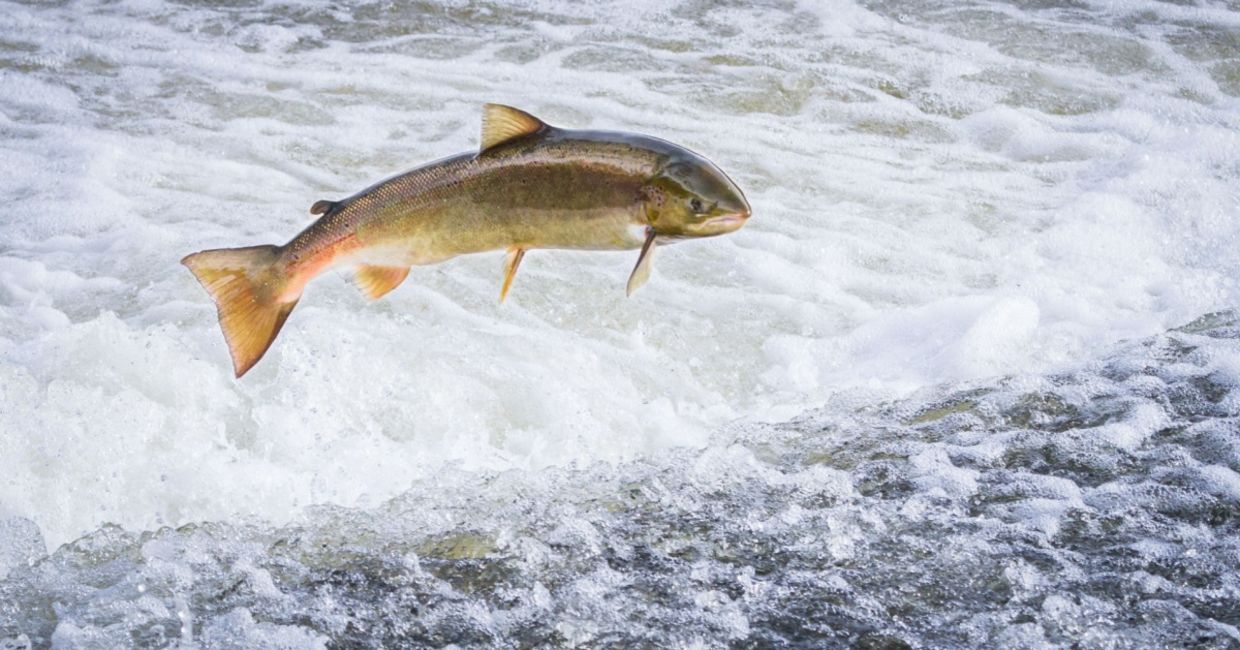
(Kevin Wells Photography / Shutterstock.com)
Atlantic salmon are leaping as they make their way to the spawning grounds in the waters of the Derwent River in Derbyshire in the UK.. While this may seem like a common occurrence, it’s really not the case. In fact, this is the first time that salmon have returned to the waters of the upper river in 100 years. It is a conservation success story.
Due to industrialization and intensive river management, the fish were driven out, according to a news report on The National History Museum website. The routes that the salmon historically swam were blocked by many dams and weirs. With the removal of these obstacles, the rivers became healthier and the fish have returned.
The salmon run
Atlantic salmon is just one of seven species that are commonly thought of as salmon, but there are actually 200 species that include trout and grayling. While the Atlantic salmon usually swim in the ocean, they begin their lives in freshwater rivers – as upstream as they can go – and only migrate to the sea as adults.
“Salmon begin [their] life in an egg that typically hatches in January or February,” James Maclaine, the curator of Fish at the Natural History Museum told the museum. The hatchlings typically spend a year or two at their birthplace before they begin to swim downstream. At this point, the smolts or young salmon begin to lose the stripes that helped protect them in the river environments.
“Most of them will swim way off to the northeast Atlantic area around Greenland where they feed and grow for a few years,” Maclaine said. ““Some of the fish will then return to spawn after just one year… but the ones that go away for two years or more before returning to spawn are what are technically called salmon.”
But the poor health of many of the UK’s rivers due to pollution, the increased extraction of water to be used for drinking and the removal of the bends in water that are necessary for the salmon to have places to feed and spawn have made it difficult for the fish to get back to their home rivers.
The conservation success story
But this story has a happy ending. In the summer of 2022, a project led by the Wild Trout Trust – a river conservation charity – began removing concrete weirs that blocked several rivers in Derbyshire, reported Derbyshire Live.
Only one percent of the rivers in England, Whales, and Scotland are free of these artificial barriers that essentially close off fish from navigating the river systems. The removal of the weir at the Snake River now allows salmon to travel up the Derwent River until it becomes the Ecclesbourne stream.
“It’s very rewarding,” Dr Tim Jacklin, a Conservation Officer for the Wild Trout Trust told the National History Museum. “We opened up a good ten kilometers of spawning habitat upstream, so that translates into hundreds more juvenile salmon that make their way downstream and hopefully to come back and spawn.”
It is hoped that within a few years, the rivers that have been essentially rewilded will continue to develop habitats with a large variety of plant and invertebrate species that are good for the salmon and for people too, according to the National History Museum.
“I think we’ve got some huge challenges ahead of us, but you know, they’re not making rivers anymore,” said Jacklin. “So we’ve got to look after the ones that we’ve got.”
There is still a long way to go but the return of the salmon to the Derwent River after 100 years, is a sign that this conservation effort is already a success.
YOU MIGHT ALSO LIKE:
Canada Clears the Way for Salmon
Dam’s Removal Restores Spirit and Habitat
Sockeye Salmon Back in Canadian Lake for First Time in Fifty Years!







